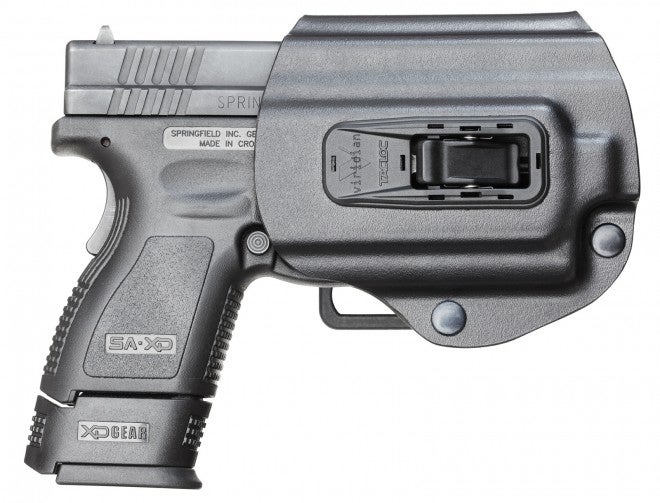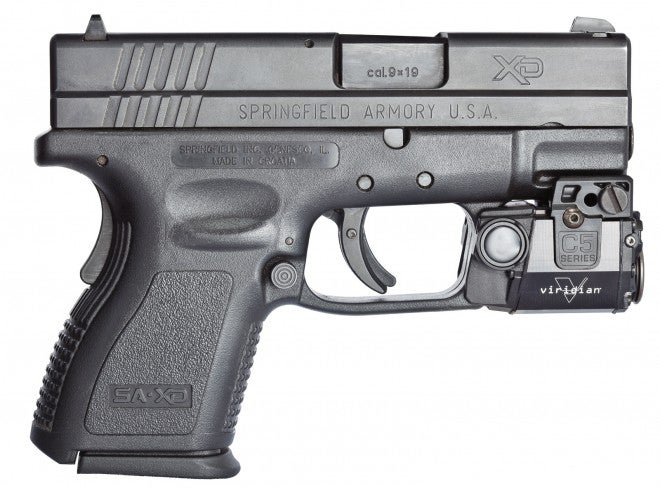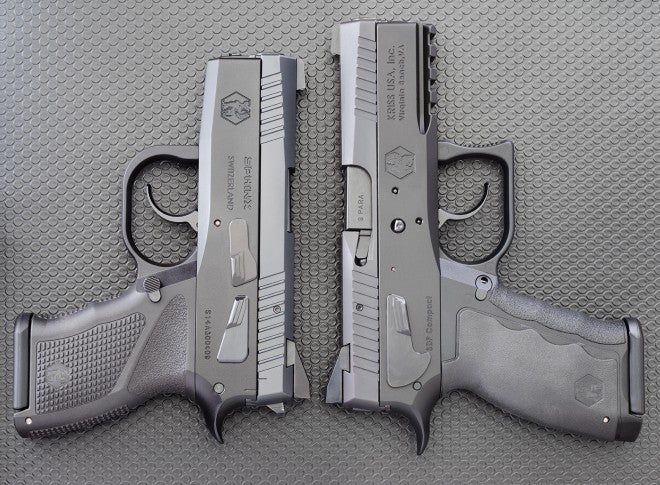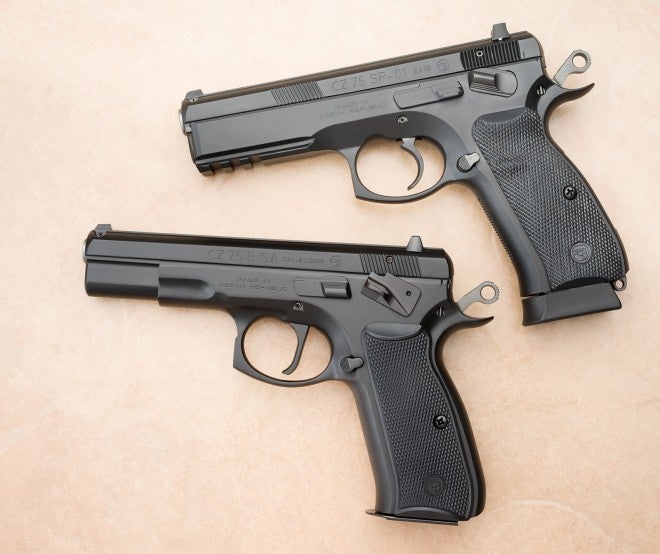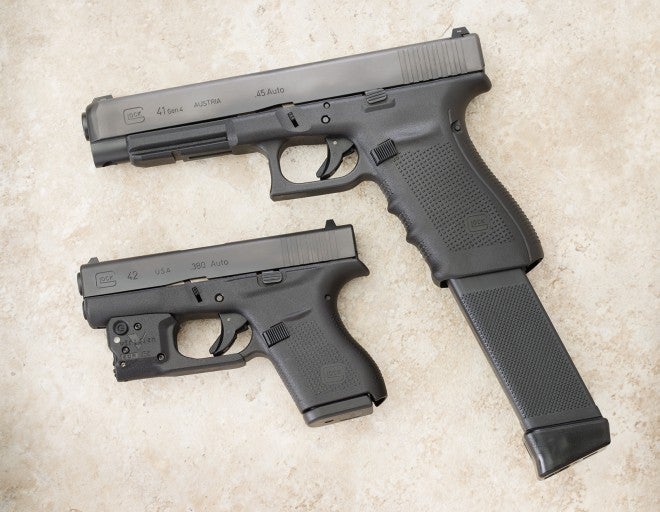Selecting Handgun Pairs for Carry and Home Defense
Oleg Volk 08.02.15
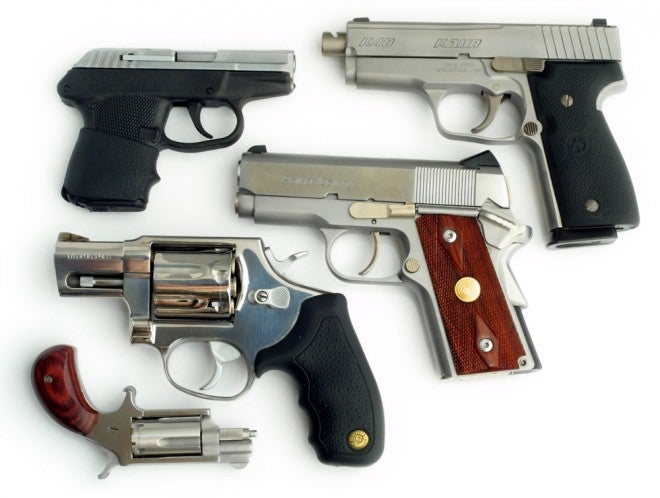
If you own one firearms, the choice of what to carry and what to keep for home defense is simple. Once you have more than one, several strategies come to mind. One approach is illustrated above: a little bit of everything, depending on the mood, the weather, and the current favorites. Not shown is the HK USP45 Compact that replaced the Para 6.45LDA after it self-destructed. The smaller guns were backups. Home defense was whatever was carried that day, supplemented with 12ga autoloading shotgun.
The main disadvantage to this eclectic approach is the variety of manuals of arms. She mixed striker fired and double action semi-autos with single and double action revolvers, later adding a DA/SA pistol to the mix. Malfunction drills were likely not as efficient as with carrying a single action type. From personal experience, I can also attest that carrying in different holsters meant grasping for a belt gun instead of the pocket pistol, or vice versa, when under stress. Because of the training issue, most people try to optimize their carry and home defense handgun pairs in some rational way.
Springfield actively promotes using the same exact pistol, but using a longer magazine with plastic grip extension at home. For concealed carry, a shorter magazine is recommended, but all controls, sights, and accessories remain the same. It’s a sensible and economical approach, with the main disadvantage being compromising on the barrel length for home defense.
Another approach is to keep all controls and overall form the same, but have a longer home gun with larger magazine and a shorter, less capacitous variant of it for carry. Compact and subcompact Sphinx pair illustrates the concept. Advantage is retaining common manual of arms while not compromising on barrel length or capacity while at home. The smaller pistol can also use larger pistol’s longer magazines as spares.
Lest people complain that having two similar handguns is wasteful, remember that “two is one.” Should one weapon break, it helps to have its near twin while repairs are effected. The two guns can be similar in all but the weight and balance, such as CZ 75 (SA variant shown) and SP01. These will take each other’s magazines and have nearly identical controls. SP01 is much heftier and more front-heavy, which gives it an advantage in rapid fire but also makes it less comfortable to tote. It also has an accessory rail missing on the more streamlined 75SA.
If maximum concealment or minimum weight is required, a very dissimilar pair is the logical answer. Outside, a small caliber subcompact (G42 in 380ACP) can be unobtrusive yet useful. Inside, go for broke with the longslide 45ACP and 27 rounds of ammunition on tap. Absent the carry constraints, why skimp on barrel length or magazine capacity? The controls remain very similar, with only a slight correction for scale.
Other approaches abound: a small revolver for carry and a large autoloader for home, or a semi-auto pistol for carry and a long gun for the old castle. Given that most of us have rather more training with handguns and the ease of maneuvering them indoors, it’s most likely that handguns would be used for home defense, at least as a secondary and likely the primary weapon. Given that, how do you rationalize your own choice?
